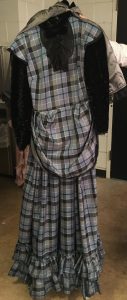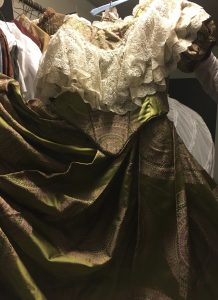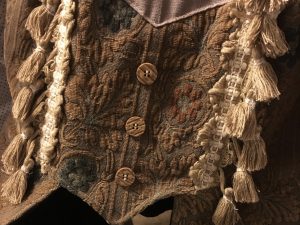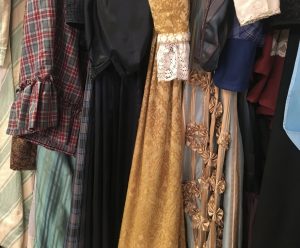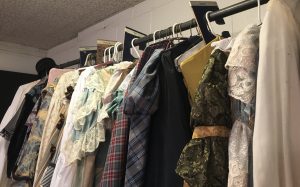Bradley’s fall show, “Little Women, the Musical,” features intricate sets, fleshed out characters and a cast that’s dedicated to the show. Though those efforts are what make the show, costuming is an aspect that also plays as large of a role.
For Rebecca Arnold, costume design constructor and associate professor of the Theatre Department, the task of finding out costumes for “Little Women” was something considered when planning for the musical.
“Normally, we build [the costumes], a combination of build and shop [for the costumes] and pull from our stock,” Arnold said. “This show was too big … [The costumes] are all period garments, so we could not put a build like that through our costume shop”
To rent the pieces, Arnold said she took two students with her to a Broadway costume shop in Chicago and spent two days there looking for the perfect costumes to fit the characters.
“I did the research for the time period,” Arnold said. “I am well-versed in fashion history and costume history, so I knew the silhouette. I knew the trims, and I know the look, but we specifically went into color and things like that.”
In finding the costumes, Arnold said the experience was different than the usual option of purchasing costumes or making them, and it had it’s own difficulties.
“If I had done the show on my own versus renting [costumes] … I would have had more control over [certain] things, whereas renting, I had ideas of what I wanted, and I had parameters which was their stock in which to deal with,” Arnold said.
Despite the challenges, Arnold said there are many reasons why costuming is considered important to a show.
“[Costuming] is huge, especially in a period show when [the actors] are wearing clothing they’re not used to,” Arnold said. “[For example], the gentlemen’s pants actually wear at their waists; they don’t sit down on their hips. The women’s skirts and dresses are much heavier and more elaborate.”
According to Arnold, costuming in not the only factor into make the actors become their characters, but makeup and hair play a part as well.
“[There are] multiple wigs in the show and hairpieces,” Arnold said. “When they put those on, it really transforms the actor.”
For the show, the four main characters have eight costume changes each, so Arnold said cooperation is necessary when the show is going on.
“A show like this isn’t possible without the support staff, without the people that were helping in the [costume] shop and the wardrobe crew backstage” Arnold said. “They don’t sit down. They are constantly moving.”
Because of that, Arnold said anyone who wants to make a career out of theatre, both on-stage and off, needs to be committed to it.
“Anybody that does theatre has to be passionate about it and has to love it because it’s so work intensive,” Arnold said. “It’s not a nine to five job”
